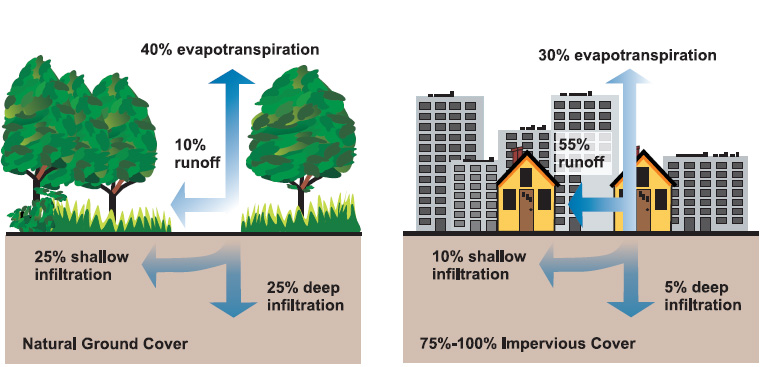
Green Stormwater Infrastructure
What is Green Stormwater Infrastructure?
In line with the City’s Eco-City Clean Waterways initiative, Green Infrastructure (GI) is an approach to reduce stormwater runoff and treat it near its source. It does so by mimicking natural hydrology and reducing the volume and rate of stormwater runoff through interception and evapotranspiration or use of water by plants in a GI practice. Otherwise, untreated stormwater is conveyed into the sewer system, into our local waterways and eventually, into the Chesapeake Bay. GI manages stormwater by using natural features to improve water quality and reduce water quantity at the source.
GI reduces impervious cover in an urban setting and mimics the natural state of the land, reducing runoff and pollution into our waterways.

Relationship between impervious cover and surface runoff. Source: US EPA
A few examples of GI include bioretention filters and rain gardens, permeable pavements, and bioretention tree wells. Many of these features can be used along existing urban streets and sidewalks. In addition to providing stormwater benefits, GI has ‘co-benefits’, such as creating more green space, enhancing the appeal and walkability of streetscapes, improving overall quality of life through improved air quality, and reducing urban heat island effects. Water captured by bioretention filters and rain gardens are also used by the plants within the planting bed. Stormwater that would normally flow into a storm drain is instead used as a resource by GI.

An example of a permeable pavement and a bioretention filter. Source: City of Alexandria
Green Infrastructure Around the City
The City has implemented a variety of GI practices, both within the Combined Sewer Service (CSS) area and citywide.
GI has been chosen as one of the strategies to meet the City’s goals of stormwater runoff reduction and pollutant removal. To date, runoff from an estimated 94 acres of stormwater within the City is being treated using GI practices, with approximately 1.75 within the CSS. Take a virtual tour that highlights some of the many types of green infrastructure practices throughout the City.
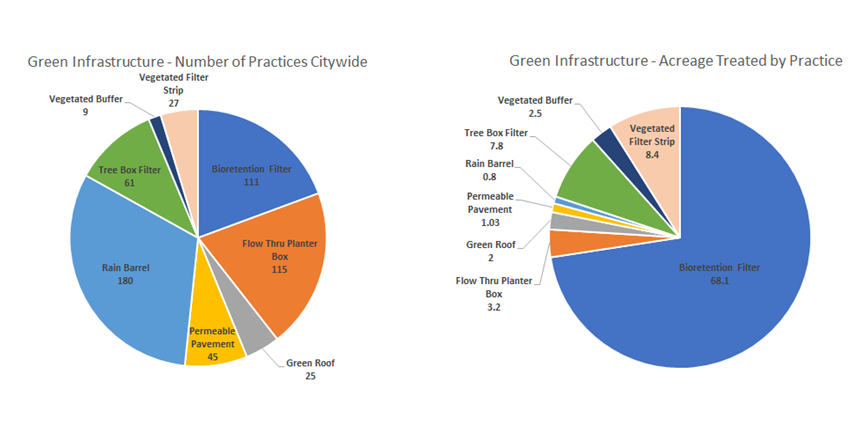
GI continues to be implemented within the City’s Municipal Separate Storm Sewer System (MS4) to meet the City’s Chesapeake Bay Total Maximum Daily Load (TMDL) goals. Additionally, the implementation of green infrastructure within the Combined Sewer System (CSS) reduces the impacts of combined sewer overflows.
GI projects were also evaluated as as potential solutions to high-priority problem areas in the 2016 Storm Sewer Capacity Analysis, and were shown to provide greatest benefits when combined with capacity projects to strategically to address prioritized issues. GI was found to be more cost-effective in areas with smaller upstream drainage areas.
GI is recognized in the City’s 2019 Chesapeake Bay TMDL Phase 2 (40%) Action Plan as the first option in selecting BMPs to retrofit existing impervious areas.
Furthermore, the City issued a Memorandum to Industry, instructing new development and redevelopment sites to achieve a minimum of 65% of the Virginia Stormwater Management Program target phosphorous removal through the use of GI practices.
Green Infrastructure Virtual Tour
Green Street and Sidewalk BMP Design Guidelines
The City issued a Memorandum to Industry, requiring certain new development and redevelopment projects to treat runoff from the public right-of-way and requiring any BMP in the right-of-way to follow design guidelines established by the City of Alexandria. In particular, the design guidelines are applicable in areas of new development or redevelopment where significant new construction will take place (e.g. large-scale buildings or facilities, or areas of large scale master plan implementation), that include either the construction of new roads and sidewalks, or significant rehabilitation of the existing right-of way.
What You Can Do
Did you know there are a variety of green stormwater infrastructure best management practices that can be implemented by homeowners? On a smaller scale, rain barrels, conservation landscaping, rain gardens, permeable pavements, and other residential GI practices provide similar stormwater benefits as their larger counterparts.
In addition, the City offers Stormwater Utility Fee Credits for various GI practices. For more information on how you can utilize GI to reduce your Stormwater Utility Fee, visit the City’s Stormwater Utility Fee Information page.
Green Infrastructure Project Gallery
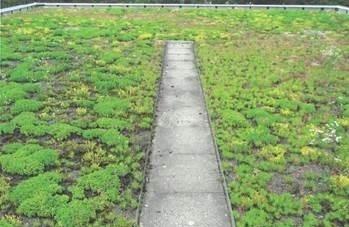
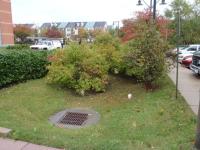
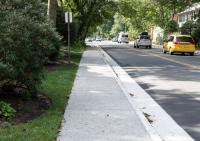



Green Roofs have been installed at City Hall, Duncan Library, Burke Library, and Fire Station 202. Green roofs provide reductions in building energy consumption, decrease in stormwater runoff, and extension of roof lifespans.
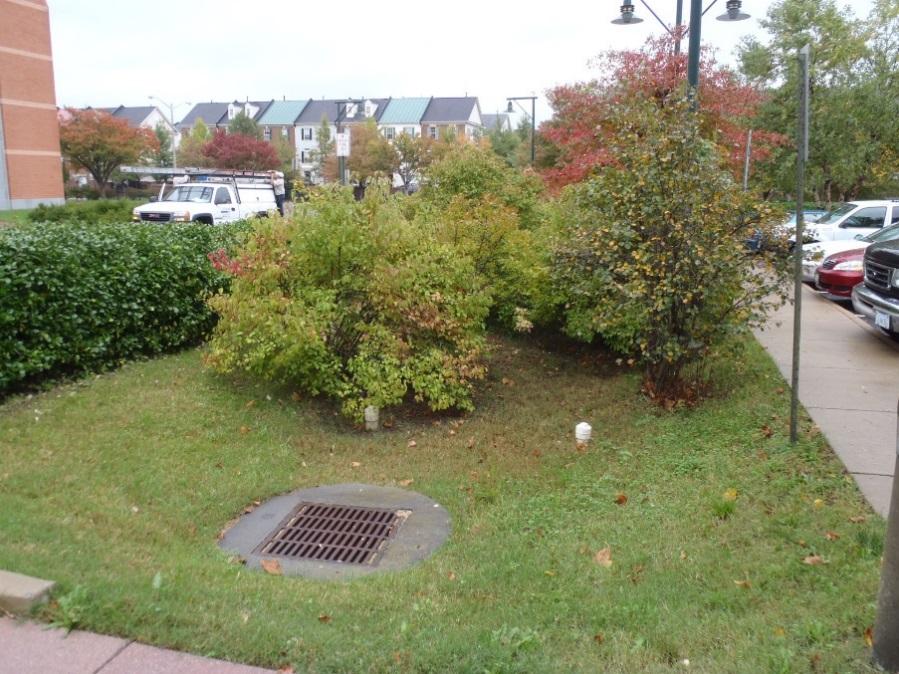
Bioretention filter practices have been installed on many City facilities, such as the Beatley Central Library. These GI features manage the quality and quantity of water generated by impervious areas such as parking lots and the building itself. They also provide pleasing landscape features to library visitors.
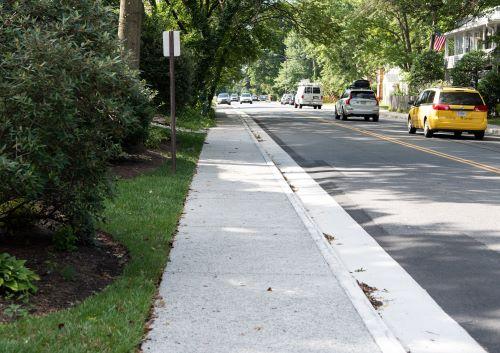
The Commonwealth Avenue Sidewalk Project was constructed in 2017 to improve the streetscape for roadway users, and included the construction of porous concrete sidewalk.
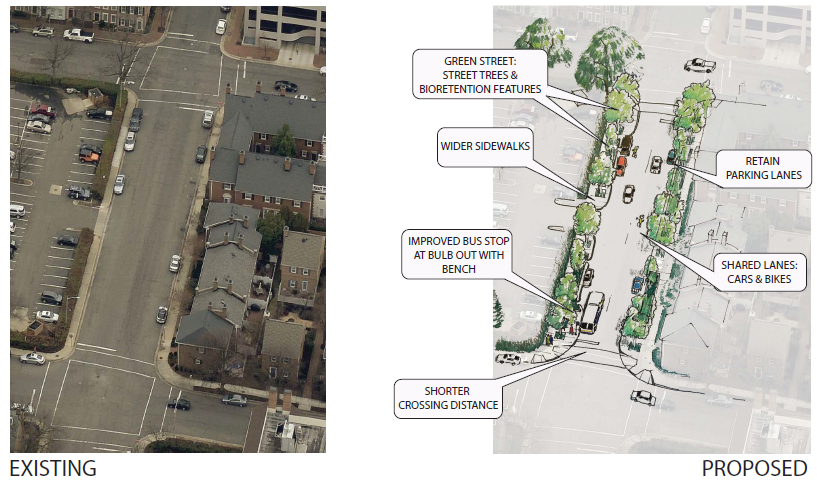
The Second Street Green Infrastructure Demonstration Project evaluated 50 sites to determine the most suitable location. Through a criteria of site evaluation scoring, holding strategy meetings with stakeholders, and compiling soil and utility evaluations, the Second Street site was chosen as the ideal candidate for the City’s Green Infrastructure Pilot Project.

The adopted Old Town North Small Area Plan includes the implementation of GI to reduce the volume of stormwater runoff and produce additional benefits such as open space conservation, providing green space, reducing energy demand, urban heat island effect, and flooding. Implementation of GI as part of the Old Town North Small Area Plan will also provide CSS benefits by reducing the volume of stormwater being conveyed in the combined pipe network.